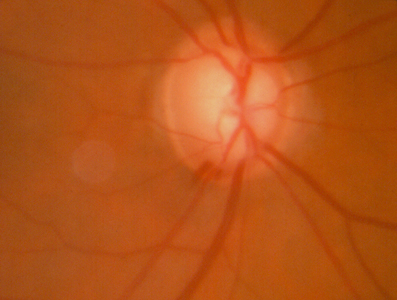Normal-tension glaucoma typically means that glaucoma damage has been detected in an eye with so-called “normal” intraocular pressure (IOP)—that is, an eye that has not had documented pressure above 20 mm Hg. Ophthalmologists increasingly believe that this condition is a continuum of the same glaucoma process seen in those people with higher IOP. Some patients with very thin corneas as measured by pachymetry may actually have abnormally high pressure but recorded as normal due to the cornea being too easy to compress when taking the IOP reading.
Normal-tension glaucoma is diagnosed by examining the appearance of the optic nerve or by detecting abnormalities on visual field tests.

The normal tension glaucoma study showed that progressive damage to the optic nerve as evidenced by changes in the visual field can be significantly reduced in people with normal-tension glaucoma by lowering their IOP by 30% or more. The 30% is not an absolute treatment target as this number was arbitrarily chosen for the purpose of the study to define the treatment end-point.
Other conditions can sometimes be mistaken for normal-tension glaucoma, so thorough eye and medical examinations are often required to make this diagnosis. Often the IOP will be measured at different times during the day to see if there are any pressure elevations. Other tests may also be necessary.
If your ophthalmologist (Eye M.D.) believes that you have normal-tension glaucoma, he or she may begin treatments to lower your IOP. This can be done with medications, laser treatment, or surgery.
Patients with adequately treated normal-tension glaucoma have a good prognosis, especially when the disease is caught early in its course.
(c) 2009 Robert M. Schertzer, MD, MEd, FRSCS based on 2007 The American Academy of Ophthalmology


